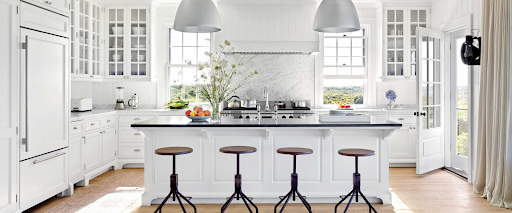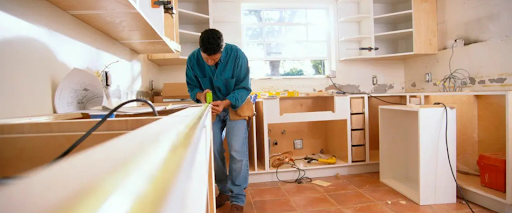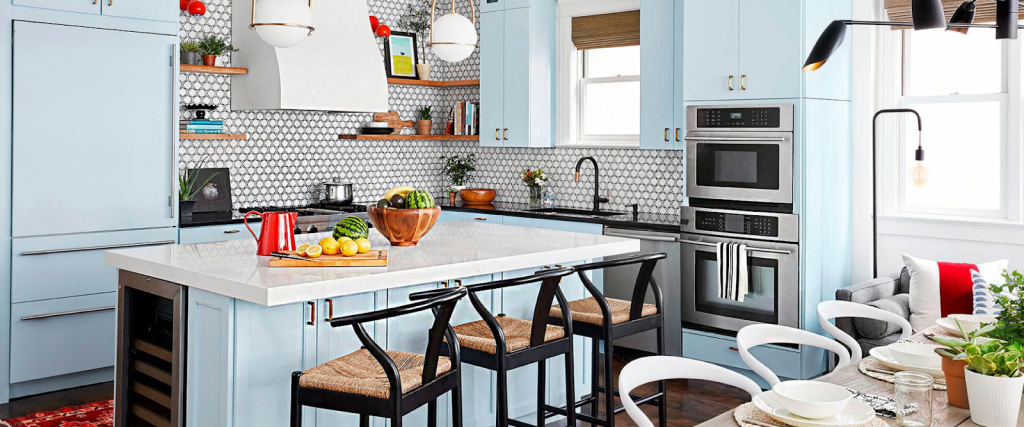Remodeling your kitchen can transform your home, boost its value, and make daily tasks more enjoyable. Whether you’re updating an outdated kitchen or creating a space that fits your lifestyle, a well-planned kitchen remodel brings both function and style.
At Selective Remodeling, we guide homeowners through every phase of the process, ensuring a smooth and satisfying experience. This kitchen remodeling guide outlines clear, actionable kitchen renovation steps to help you achieve your dream kitchen. From planning to completion, we’ll cover everything you need to know to tackle your project with confidence.
Why Remodel Your Kitchen?
A kitchen remodel offers numerous benefits, from boosting your home’s resale value to improving daily functionality. Homeowners often choose to remodel to address issues like cramped spaces, outdated appliances, or inefficient layouts. A well-planned kitchen renovation can also save energy and make cooking more enjoyable. By partnering with professionals like Selective Remodeling, you ensure your project aligns with your vision and budget.
Benefits of a Kitchen Remodel
- Increased Property Value: A modern, updated kitchen is a top-selling point for potential buyers, often yielding a high return on investment.
- Enhanced Functionality: New layouts, storage solutions, and appliances streamline tasks like meal prep and cleanup.
- Energy Savings: Upgrading to energy-efficient appliances and lighting reduces utility bills over time.
- Personalized Aesthetics: Customize your kitchen to match your style, whether it’s sleek and modern or warm and traditional.
When to Consider a Kitchen Remodel
You might need a kitchen remodel if your current space feels cramped, lacks storage, or has worn-out fixtures. Outdated designs, like old countertops or inefficient lighting, can also signal it’s time for a change. Selective Remodeling can assess your kitchen and recommend tailored solutions to maximize your space and budget and provide you with the best kitchen renovation services on Long Island, NY.
Step 1: Define Your Goals and Budget for Your Kitchen Remodel
Before starting your kitchen remodel, clarify your goals. Do you want more storage, better lighting, or a modern layout? Write down your priorities, such as upgrading appliances or improving workflow. Next, set a realistic budget, and factor in costs for materials, labor, and unexpected expenses. A typical kitchen remodel varies depending on the scope. Research local costs, especially for installation on Long Island, NY, to align your budget with regional pricing. Selective Remodeling offers transparent estimates to help you plan effectively.
Assess Your Needs
Evaluate your current kitchen. Is it too small, cluttered, or inefficient? Consider your family’s needs, like extra counter space for cooking or a layout for entertaining. This step ensures your kitchen renovation steps align with your lifestyle.
Set a Realistic Budget
Break your budget into categories: cabinets, countertops, appliances, labor, and permits. Allocate some budget for unexpected costs. A clear budget keeps your project on track and prevents overspending.
Step 2: Plan Your Kitchen Layout and Design
A well-thought-out kitchen layout is the backbone of a successful remodel. Popular layouts include L-shaped, U-shaped, or open-plan designs. Choose one that maximizes space and flow. For small kitchen spaces, consider a galley or single-wall layout to optimize every inch. Work with a designer to create a plan that balances aesthetics and function.
Choose a Functional Layout
Measure your kitchen’s dimensions and map out appliance placement, storage, and workspaces. Ensure the “work triangle” (sink, stove, refrigerator) promotes efficiency. Selective Remodeling’s design team can help craft a layout tailored to your needs.
Select Your Style
Decide on a design theme, such as modern, traditional, or farmhouse. Browse inspiration online or visit a Long Island home remodeling gallery for ideas. Pick colors, finishes, and fixtures that reflect your taste while staying timeless.

Step 3: Choose Materials and Finishes
Selecting the right materials for kitchen remodeling impacts durability and appearance. Focus on quality for high-use areas like countertops and cabinets. Quartz or granite countertops offer durability and style, while hardwood or laminate flooring suits heavy traffic. For cabinets, opt for solid wood or plywood for longevity.
Countertops and Backsplashes
Choose materials that balance cost and maintenance. Quartz is low-maintenance, while marble adds luxury but requires care. A ceramic or glass tile backsplash adds personality and protects walls.
Cabinets and Storage
Invest in kitchen cabinets that maximize storage. Custom or semi-custom options from Selective Remodeling ensure a perfect fit. Consider pull-out shelves or deep drawers for accessibility.
Step 4: Hire a Reliable Contractor
A skilled contractor brings your kitchen remodel to life. Look for licensed professionals with experience in kitchen renovation steps. Check reviews, ask for references, and verify credentials.
Questions to Ask Your Contractor
Ask about timelines, warranties, and how they handle permits. Ensure they communicate clearly and provide detailed contracts. A trustworthy home renovation contractor keeps your project on schedule and within budget.
Step 5: Obtain Permits and Prepare for Construction
Most kitchen remodels require permits for electrical, plumbing, or structural changes. Check local regulations, especially in Suffolk County, to avoid delays. Your contractor should handle permits, but stay informed about requirements. Prepare your home by clearing the kitchen and setting up a temporary cooking area.
Packing and Storage
Safely pack dishes, appliances, and pantry items, and label boxes for easy unpacking. Rent a storage unit if needed to keep items safe during construction.
Timeline Expectations
A full kitchen remodel typically takes 6-12 weeks, depending on complexity. Discuss timelines with your contractor to plan around disruptions.
Step 6: Execute the Remodel
Construction begins with demolition, followed by rough-in work (electrical, plumbing, HVAC). Next, install flooring, cabinets, countertops, and appliances. Regular communication with your contractor ensures everything stays on track. Selective Remodeling’s team coordinates every detail, from demolition to final touches, for the process.
Monitor Progress
Visit the site regularly to check progress and address concerns. Keep a list of questions for your contractor to stay aligned with goals.
Handle Unexpected Issues
Unforeseen issues, like outdated wiring, may arise. Work with your contractor to address them promptly without derailing your budget.
Step 7: Add Finishing Touches and Inspect
Once construction is complete, focus on finishing touches like paint, lighting, and hardware. Conduct a final walkthrough with your contractor to ensure everything meets your standards. Test appliances, check cabinet alignment, and inspect surfaces for flaws.
Personalize Your Space
Add decor like plants, artwork, or rugs to make the kitchen yours. Choose functional accessories, like utensil organizers, to enhance usability.
Final Inspections
Ensure all work complies with building codes; schedule inspections for electrical and plumbing systems before using the kitchen entirely.

Why Choose Selective Remodeling for Your Kitchen Project
Selective Remodeling offers expert guidance. Our team handles every aspect of your kitchen remodel, from design to installation, ensuring a stress-free experience. With a focus on quality and customer satisfaction, we create kitchens that blend beauty and function.
FAQ
How long does a kitchen remodel take?
A typical kitchen remodel takes 6-12 weeks, depending on the project’s scope and complexity. Custom designs or structural changes may extend the timeline.
Can I live in my home during a kitchen remodel?
Yes, but expect disruptions. Set up a temporary kitchen in another room. Selective Remodeling minimizes inconvenience with efficient project management.
What’s the best layout for a small kitchen?
For small kitchen spaces, a galley or L-shaped layout maximizes space. Consult a professional to optimize storage and flow.
Conclusion
Remodeling your kitchen is a rewarding project that enhances your home’s value and functionality. By following these kitchen renovation steps, you can create a space that suits your needs and style. From planning your kitchen layout to choosing durable materials, each step builds toward your dream kitchen.
Partner with Selective Remodeling for expert support and flawless execution.

